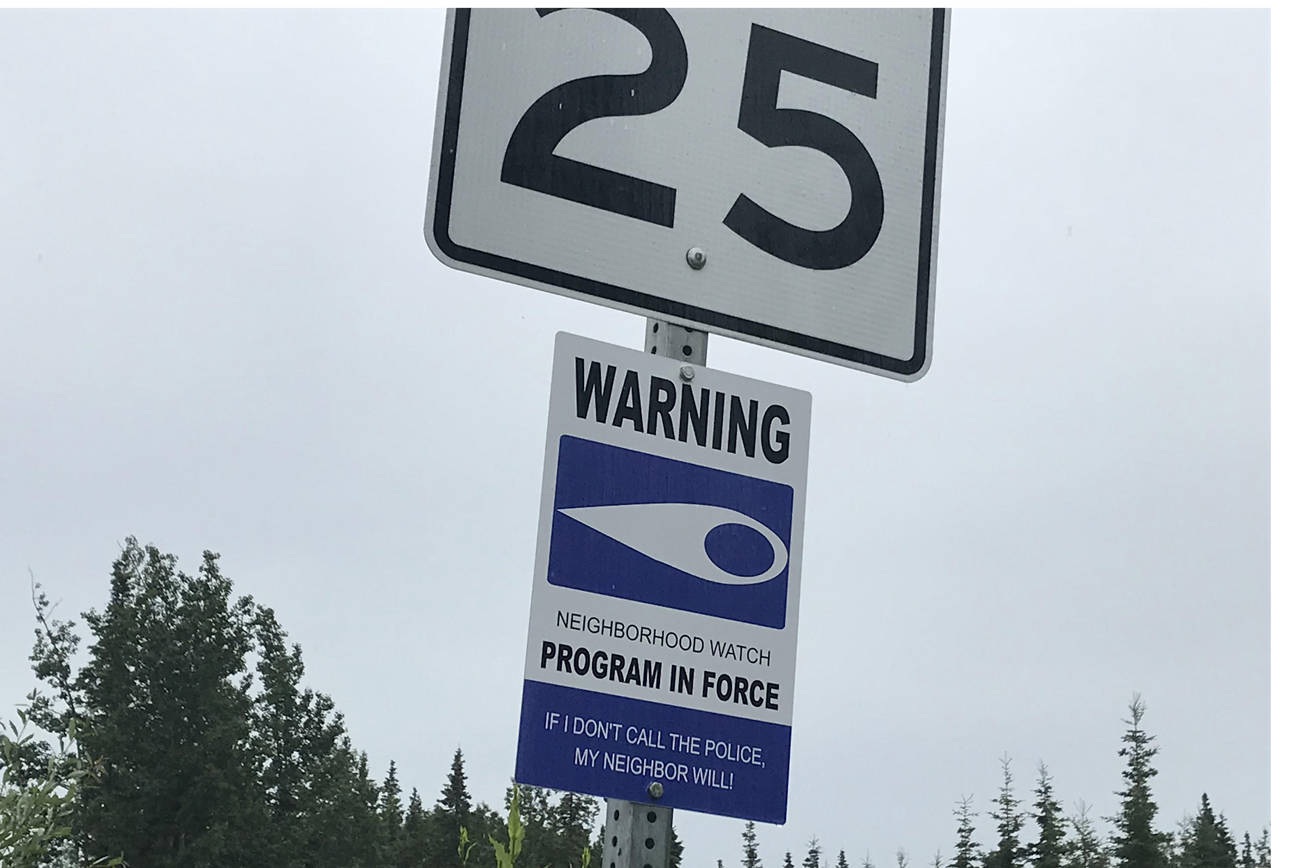Anchor Point residents looking to reduce crime can learn about some easy and inexpensive techniques at a meeting on how to set up a local chapter of the National Neighborhood Watch, a crime prevention program, to be held 6 p.m. Tuesday, July 31, at the Anchor Point Senior Center.
The National Sheriffs’ Association helped start the Neighborhood Watch Program more than 40 years ago. It has a website with information on the program at www.nnw.org
Naomi Sweetman, an Alaska Department of Public Safety program coordinator, will speak at the meeting about the national program. People can sign up at the Tuesday meeting for training sessions on Wednesday, which will also be held at the senior center.
The meeting came about after a June 12 community meeting at the senior center where 80 people spoke on rising crime in the rural area.
“We just had so many people with petty break-ins,” said Cindy Burns, senior center director and organizer of next week’s meeting. “It’s getting worse and worse. What do we do?”
At the June meeting, Alaska State Troopers attended and listened, and said they would help set up a meeting for people to learn about what it takes to form a neighborhood watch..
Rep. Paul Seaton said he plans to attend the July 31 meeting. In a recent newsletter, Seaton announced that the Alaska Legislature had appropriated $75,000 through the Alaska Department of Commerce, Community & Economic Development to provide support for neighborhood watch programs. Seaton said the grant application process is being developed. Funds can be used for signage and organization efforts.
“Some people want vigilante stuff. This isn’t vigilante,” he said. “This is communities coming together to promote safety.”
People may be familiar with the concept of a neighborhood watch from signs in communities warning criminals they’re being observed. It’s more than that, though, Sweetman said. Community involvement, higher visibility, trimming brush and better lighting are some of the tools she’ll talk about. Neighborhood Watch is part of a crime-fighting strategy called Crime Prevention Through Environmental Design, or CPTED.
“In layman’s terms, you’re taking an environment and making it inhospitable to the illegitimate user and making it welcoming to the legitimate user,” Sweetman said in a phone interview.
Community involvement starts with something rural Alaskans might have a jump on: knowing your neighbors. Sweetman said that in her Anchorage neighborhood, “What we do have in my community is a map of the neighborhood with each of the houses on the map and the name of the people who live in the houses and a phone number,” she said. “When something happens in our community, we have phone numbers.”
The idea of clearing brush has been used in Anchorage and Homer in response to tent camps sometimes associated with crime. Sweetman said the rule is to trim brush down to 2 feet and limb trees up to 6 feet. At a tent city in Ship Creek, clearing led to camps being moved out — or moved to other areas. In Homer, the city cleared the land along a trail from the Homer Public Library to the Poopdeck Trail. Crews also cleared brush on land in the proposed Town Square area west of Poopdeck Street and east of Main Street.
“If you can see your property from the road, it gives the thief a sense they can be spotted,” Sweetman said.
CPTED also uses lighting to deter crime, and not just superbright lighting like at the Homer Harbor. In one city, lights that cast a harsh, yellow light made it hard for drug dealers to count cash, Sweetman said. It also made prostitutes look unattractive. At a school where prostitutes and johns went behind the school, children painted art with images of children.
“The johns won’t go behind the school because it reminds them of their kids,” Sweetman said.
To make vacation cabins look occupied, neighbors can plow driveways. Even things like statues, posters and drawings of people give the appearance that a home is being watched.
“There’s a bunch of different strategies that can be used,” Sweetman said. “The trick is using the strategies that will work in your community.”
Sweetman suggested searching on the web for “crime prevention through environmental design.” One good source is at https://www.thebalancesmb.com/crime-prevention-through-environmental-design-394571.
Reach Michael Armstrong at marmstrong@homernews.com.


